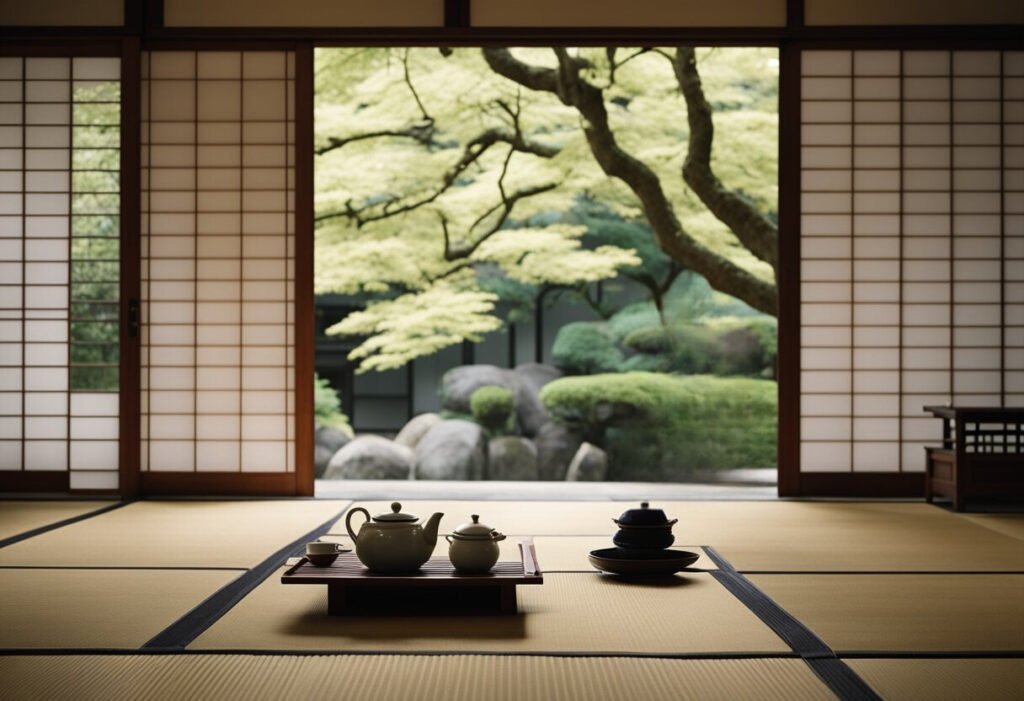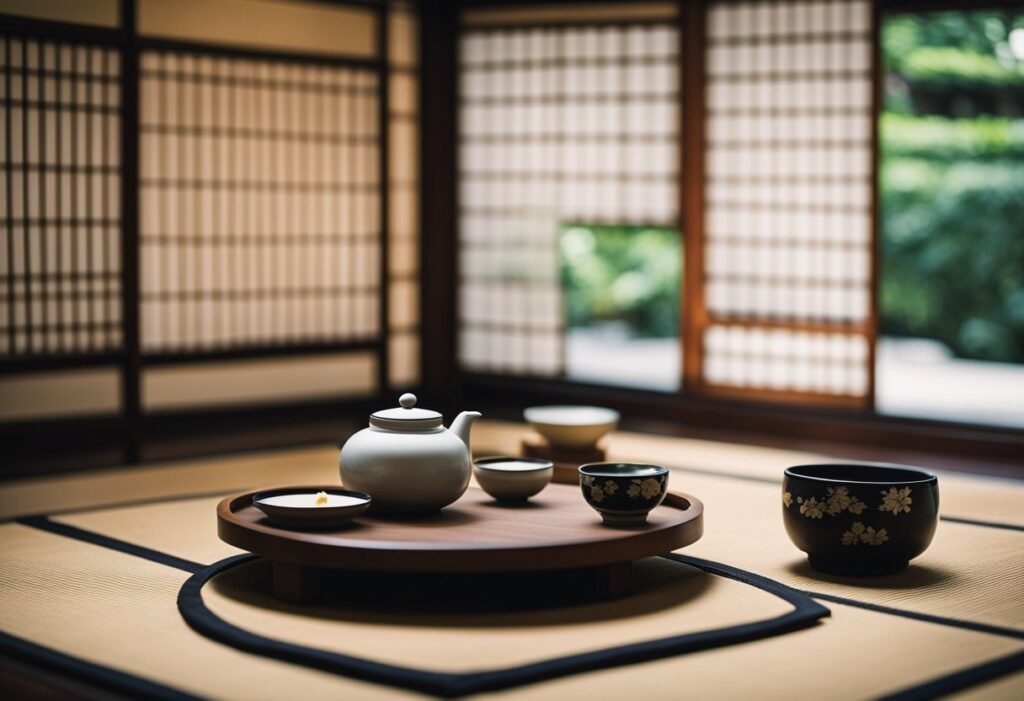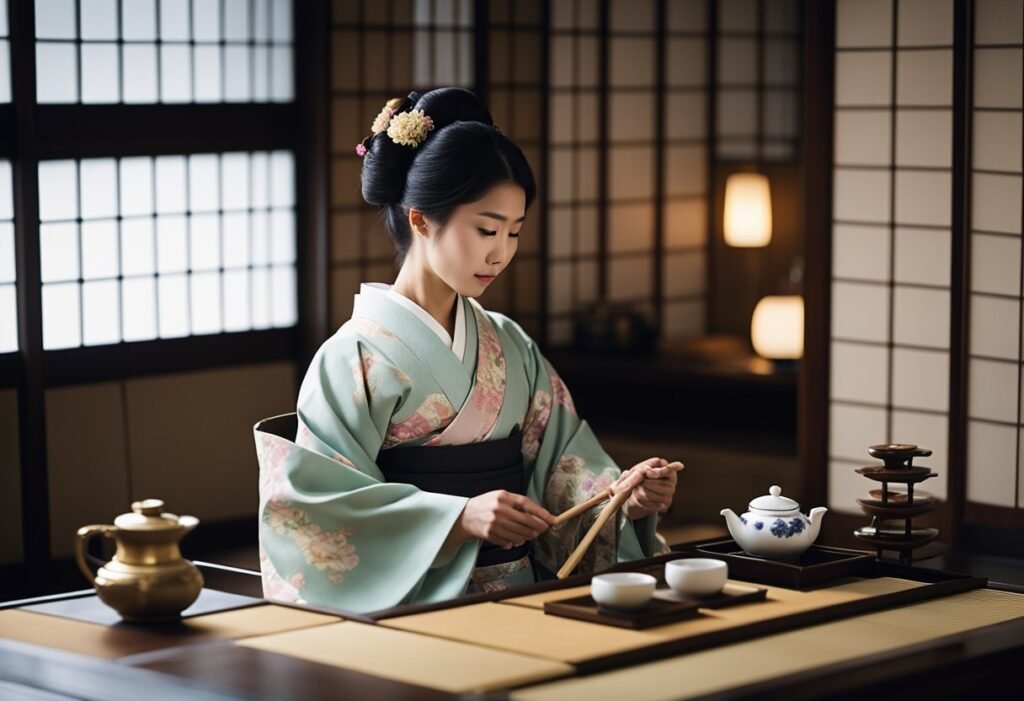Stepping into a kimono for tea ceremony in Tokyo offers a profound glimpse into Japan’s cultural heritage. The careful folding of silk fabric around your body and the deliberate movements of the tea preparation create a meditative experience unlike any other. Visitors to Tokyo can participate in authentic tea ceremonies at venues like Maikoya Tokyo, where guests don elegant kimonos and learn the art of preparing matcha green tea during 45-minute sessions in a traditional teahouse setting.
Table of Contents
ToggleThis centuries-old ritual combines elements of Zen Buddhism, hospitality, and aesthetic appreciation that continue to define Japanese cultural identity today. In Tokyo’s bustling metropolis, these tea ceremony experiences provide a peaceful contrast to the city’s modern energy, allowing participants to slow down and engage with tradition. Whether in Asakusa or Shinjuku, these cultural activities welcome groups of any size and accommodate both men and women interested in connecting with Japanese customs.
Key Takeaways
- Tea ceremony experiences in Tokyo typically last 45 minutes and include wearing traditional kimonos while learning to prepare matcha green tea.
- Both Maikoya Tokyo and Kouyama Garden offer authentic venues where visitors can engage in this cultural ritual regardless of group size.
- The ceremony combines aesthetic appreciation, mindfulness, and hospitality principles that remain central to Japanese cultural identity.
History of Kimono in Tea Ceremonies

The tradition of wearing kimono during tea ceremonies reflects Japan’s cultural evolution and aesthetic principles developed over centuries. These elegant garments enhance the ceremonial atmosphere through their color symbolism, seasonal motifs, and ritualistic significance.
Origins and Evolution
Kimono became an integral part of Japanese tea ceremony during the Muromachi period (1336-1573), coinciding with the ceremony’s formalization. Initially, participants wore formal court attire, but this gradually shifted to more subdued kimono styles under the influence of tea masters like Sen no Rikyū in the 16th century.
The wabi-sabi aesthetic championed by Rikyū emphasized simplicity and rustic beauty, leading to kimono choices that reflected these values. Tea ceremony kimono evolved to feature muted colors and subtle patterns that wouldn’t distract from the ceremony itself.
During the Edo period (1603-1868), specific kimono styles became codified for tea ceremonies. Hosts typically wore crested kimono (montsuki) in subdued colors, while guests wore formal kimono appropriate to their social status and the season.
Symbolism and Significance
Kimono worn during tea ceremonies incorporate meaningful symbolism through their colors and patterns. Seasonal motifs on the garments complement the seasonal themes expressed in the ceremony’s decorations and utensils.
For formal tea gatherings, the kimono selection follows strict protocols reflecting the wearer’s role and the event’s formality. Tea masters often choose kimono that harmonize with the tea room’s aesthetics and the ceremony’s theme.
The kimono’s obi (sash) placement and folding technique holds particular importance during tea ceremonies. Participants must arrange their kimono to allow proper movement while kneeling and serving tea, maintaining a balance between beauty and functionality.
Modern tea ceremony experiences in Tokyo often include kimono rental for participants, allowing visitors to fully immerse themselves in this cultural tradition while learning about the garments’ historical significance.
Traditional Kimono Attire
Kimono attire forms an essential part of the authentic Japanese tea ceremony experience in Tokyo. The traditional garments and proper accessories create a harmonious appearance that respects centuries-old cultural practices.
Types of Kimonos
The kimono worn during tea ceremonies typically reflects the season, occasion, and formality level. For formal tea ceremonies, guests often wear homongi (visiting wear), a semi-formal kimono with patterns flowing across seams. Men typically wear montsuki, dark-colored kimonos with family crests.
During summer ceremonies, participants may wear yukata, a lighter cotton kimono. These are more comfortable in hot weather while still maintaining proper decorum.
Tea ceremony venues in Tokyo often provide rental options with various styles and colors. The most formal tea ceremonies might require tomesode for married women or furisode for unmarried women, with their distinctive longer sleeves.
Seasonal motifs on kimonos connect wearers to nature and the changing seasons, an important aspect of tea ceremony philosophy.
Accessories and Footwear
Proper kimono attire requires several essential accessories to create a complete ensemble:
- Obi: The wide sash wrapped around the waist, often elaborately tied
- Obijime: Decorative cord tied over the obi
- Obiage: Scarf tucked into the top of the obi
- Tabi: White split-toed socks
- Zori or geta: Traditional Japanese sandals
Modest jewelry is acceptable, but minimalism is preferred. Women often wear hair ornaments like kanzashi (decorative hairpins) that complement their kimono’s design and the season.
For tea ceremonies, participants typically remove their zori before entering the tea room, leaving only tabi socks on. This practice helps protect traditional tatami flooring while maintaining cleanliness in the ceremonial space.
Rules of Wearing Kimono
Wearing kimono properly follows specific guidelines that reflect Japanese cultural values. The left side always folds over the right (the opposite is only used for dressing the deceased). Proper posture is essential—sitting straight with minimal movement preserves the kimono’s elegant lines.
Kimonos should be wrapped snugly but not restrictively. The ohashori (fold at the waist) should be precisely adjusted to ensure the kimono reaches the ankles without dragging on the floor.
Kimono Tea Ceremony venues in Tokyo often provide dressing assistance, as proper kimono wearing typically requires help. Professional kimono dressers (kitsuke) ensure all elements are correctly positioned.
For foreigners participating in tea ceremonies, hosts understand the challenges of kimono wearing and offer guidance. The rules are followed less strictly for tourists enjoying cultural experiences.
Tea Ceremony Etiquette

Participating in a Japanese tea ceremony requires adherence to specific protocols that honor this centuries-old tradition. Guests have particular responsibilities while hosts follow prescribed movements, and kimono wear adds another dimension of cultural custom.
Guest Responsibilities
When attending a tea ceremony in Tokyo, arrive approximately 10 minutes early to prepare yourself mentally. Remove your shoes before entering the tea room and place them neatly facing outward.
Sit in the seiza position (kneeling with legs folded underneath) unless physically unable. If you struggle with seiza, inform the host beforehand to arrange alternative seating.
When served tea, place it on your left palm while supporting it with your right hand. Before drinking, bow slightly to the host and turn the cup clockwise 2-3 times so the decorative front faces away from you.
Take small, quiet sips and compliment the host on the tea’s quality. Avoid leaving lipstick marks on the cup rim by drinking from the same spot each time.
Kimono-Related Customs
Traditional tea ceremonies often involve kimono wear, though modern ceremonies may accept western attire. If wearing a kimono, women traditionally choose subdued colors and patterns appropriate for the season.
Long kimono sleeves must be managed carefully to avoid dipping into food or tea. Fold your sleeves back slightly when handling tea or sweets. This prevents soiling the fabric while maintaining elegance.
Men typically wear a kimono with hakama (pleated trousers) in dark, muted colors. The obi (belt) should be tied precisely at waist level, neither too high nor too low.
Remember that kimono movement requires practice. Take smaller steps than normal and move deliberately to maintain the garment’s proper alignment. Modern tea experiences in Tokyo often provide kimono rental and dressing assistance for visitors.
Kimono Tea Ceremony Experiences in Tokyo
Tokyo offers various authentic kimono tea ceremony experiences that combine traditional dress with the art of Japanese tea. Visitors can immerse themselves in cultural activities at dedicated venues where trained hosts guide participants through centuries-old rituals.
Popular Locations
Maikoya Tokyo stands out as a premier destination for kimono tea ceremonies in the city. It’s uniquely positioned as the only facility in Tokyo where visitors can experience both authentic kimono wearing and traditional tea ceremony in one location.
The venue provides various kimono sizes and styles to accommodate different preferences and body types. Located in Shinjuku, Maikoya’s traditional setting creates an immersive atmosphere for cultural engagement.
Another notable location is Maikoya’s Asakusa branch, which offers similar experiences in the historic district known for its temples and traditional ambiance.
Both venues have earned positive reviews for their authentic approach to introducing Japanese cultural practices to international visitors.
Private vs Group Ceremonies
Private ceremonies offer personalized attention and customized pacing, ideal for those seeking in-depth understanding of tea rituals. These sessions typically feature one-on-one instruction and the flexibility to ask detailed questions about the ceremony’s significance.
Group ceremonies accommodate parties of any size and create a communal atmosphere while maintaining traditional elements. These sessions are more affordable while still providing authentic cultural immersion.
Both options include professional guidance on kimono selection and wearing techniques. Group ceremonies often create opportunities for cultural exchange among participants from different backgrounds.
Most venues offer both formats, allowing visitors to select based on their preferences and budget considerations.
Booking and Preparation Tips
Book your tea ceremony experience at least 2-3 days in advance, especially during peak tourist seasons (spring and fall). Online reservations through the venue’s website or platforms like Viator ensure availability for your preferred date and time.
Wear or bring socks as shoes are removed during the ceremony. Arrive 15-30 minutes before your scheduled time to allow for kimono selection and fitting. Most packages include:
- Kimono rental with professional dressing assistance
- Hair styling services (primarily for women)
- Tea ceremony instruction with matcha preparation
- Explanation of ceremonial significance and techniques
Consider choosing a package that provides photo opportunities to commemorate your experience. Prices typically range from ¥4,000-¥10,000 depending on the package inclusions and whether you choose a private or group session.
